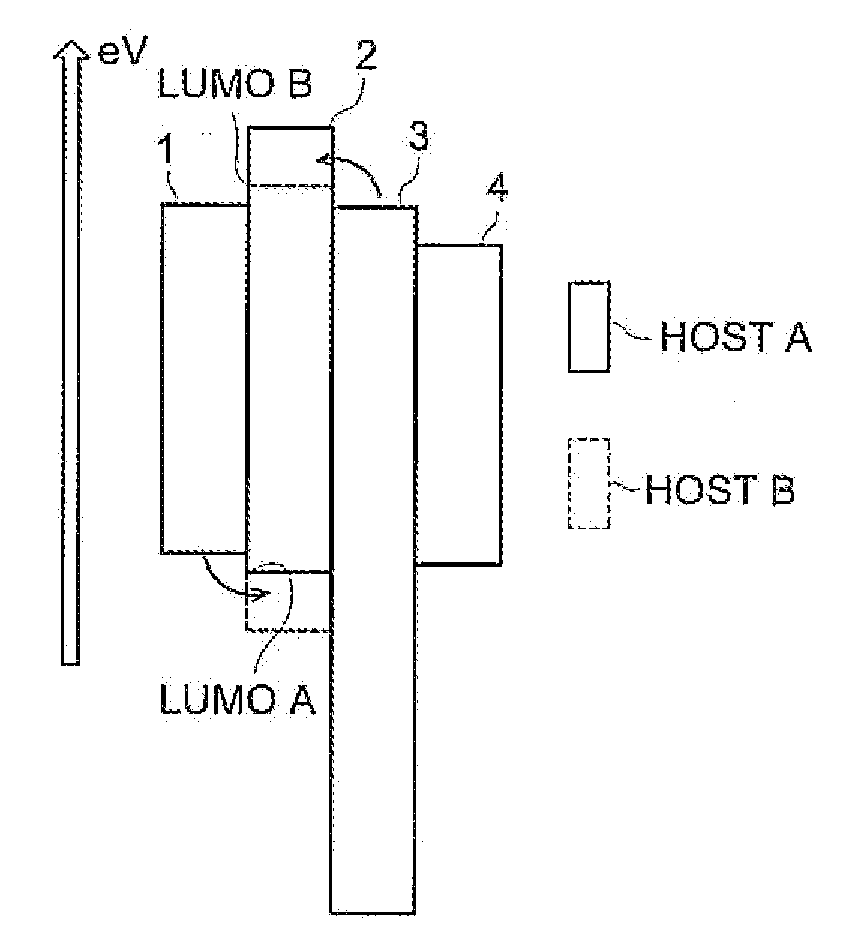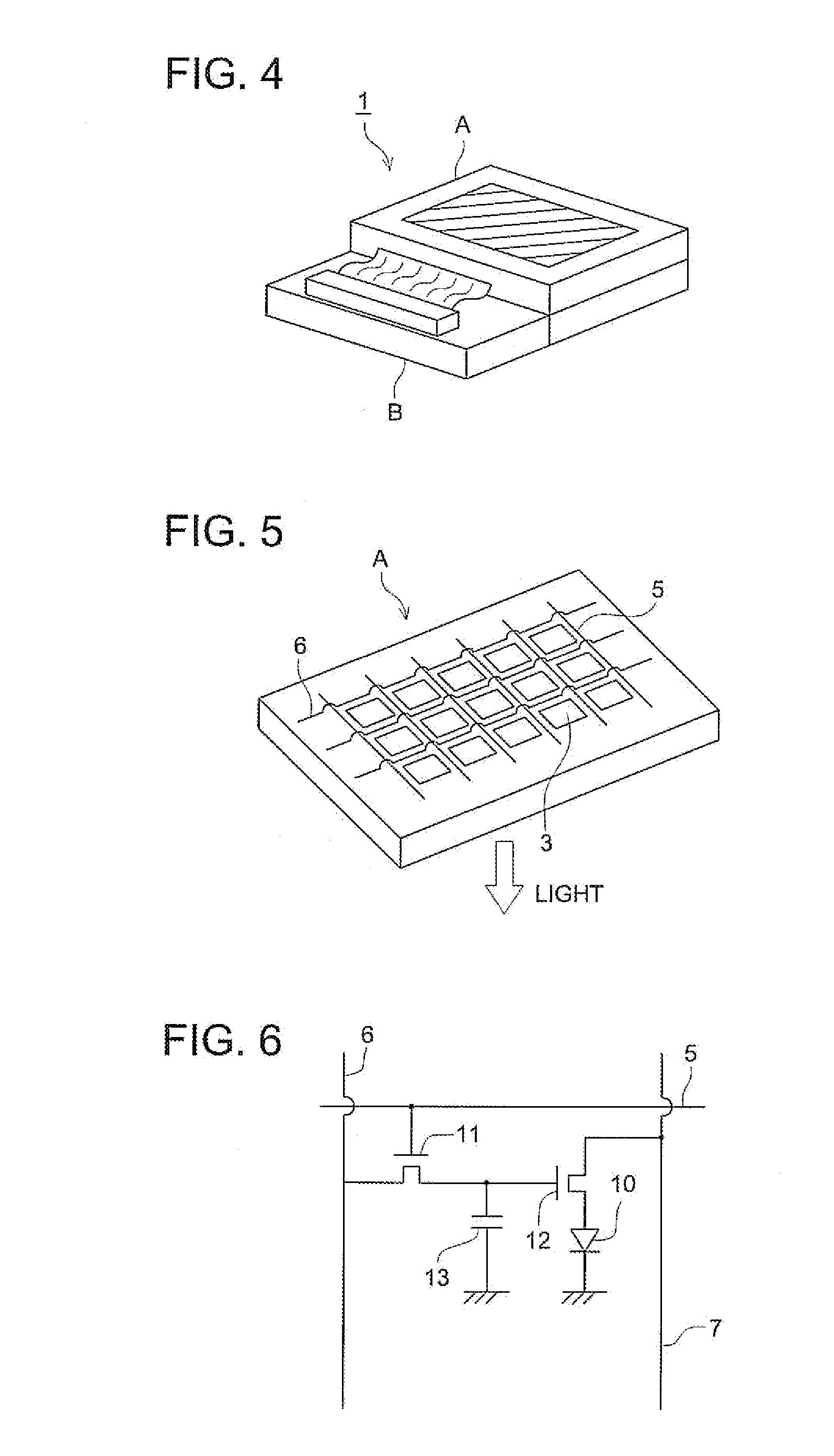Organic electroluminescent device, display and illuminating device
a technology of electroluminescent devices and illuminating devices, which is applied in the direction of discharge tubes/lamp details, discharge tubes luminescnet screens, other domestic articles, etc., can solve the problems of insufficient efficiency and lifetime, insufficient efficiency of light-emitting devices employing fluorescent dopants as light-emitting materials, and insufficient efficiency of light-emitting devices employing phosphorescent dopants. achieve high emission efficiency, high emission luminance, and high emission efficiency
- Summary
- Abstract
- Description
- Claims
- Application Information
AI Technical Summary
Benefits of technology
Problems solved by technology
Method used
Image
Examples
example 1
Preparation of organic EL device Samples 1-1
[0183]A pattern was formed on a substrate (NA45, manufactured by NH Technoglass Co., Ltd.) composed of a glass plate (100 mm×100 mm×1.1 mm) and a 100 nm ITO (indium tin oxide) layer as an anode. Then the resulting transparent substrate having the ITO transparent electrode was subjected to ultrasonic washing in isopropyl alcohol and dried by a dry nitrogen gas and subjected to UV-ozone cleaning for 5 minutes. The thus obtained transparent substrate was fixed on a substrate holder of a vacuum deposition apparatus available on the market. Further, 200 mg of m-MTDATXA were put in a first resistive heating molybdenum boat, 200 mg of Compound 1 were put in a second resistive heating molybdenum boat, 200 mg of Compound 2 were put in a third resistive heating molybdenum boat, 100 mg of PL-26 were put in a fourth resistive heating molybdenum boat, 100 mg of Compound 3 were put in a fifth resistive heating molybdenum boat, and 200 mg of Alq3 were pu...
example 2
Inventive: Preparation and Evaluation of Organic EL Device sample 3-1
[0200]A 55 nm thick hole transporting layer 3, a 30 nm light emission layer 4, a 10 nm thick hole inhibiting layer comprised of BAlq, a 40 nm thick electron transporting layer 5 comprised of Alq3, a 0.5 nm cathode buffer layer 6 comprised of lithium fluoride and a 100 nm cathode 7 comprised of Aluminum were provided on that order on the glass substrate 1 with an ITO transparent anode in a similar manner as Example 1. The hole transporting layer 3 was comprised of a 40 nm first hole transporting layer of m-MTDATA and a 15 nm second hole transporting layer of m-MTDATAX provided in that order. The light emission layer 4 was comprised of three layers, i.e., a 15 nm first layer doped with a blue phosphorescence-emitting phosphorescent compound PL-26 in an amount of 3% based on the total amount of Compounds 1 and 2, a 5 nm second layer of Compound 5 and a 10 nm third layer doped with a red phosphorescence-emitting phosph...
example 3
[0203]The non-emitting surface of organic EL device sample 3-1 obtained above was covered with a glass plate to obtain an illuminating device. The illuminating device can be used as a thin, white light-emitting illuminating device with high emission efficiency, high power efficiency and long emission lifetime. FIG. 9 is a schematic drawing of an illuminating device. FIG. 10 is a sectional view of an illuminating device.
PUM
 Login to View More
Login to View More Abstract
Description
Claims
Application Information
 Login to View More
Login to View More - R&D
- Intellectual Property
- Life Sciences
- Materials
- Tech Scout
- Unparalleled Data Quality
- Higher Quality Content
- 60% Fewer Hallucinations
Browse by: Latest US Patents, China's latest patents, Technical Efficacy Thesaurus, Application Domain, Technology Topic, Popular Technical Reports.
© 2025 PatSnap. All rights reserved.Legal|Privacy policy|Modern Slavery Act Transparency Statement|Sitemap|About US| Contact US: help@patsnap.com



